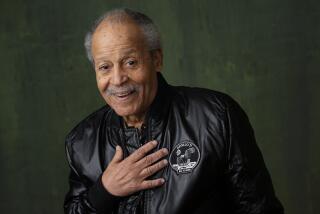2001 the Anniversary of Space Odysseys
CAPE CANAVERAL, Fla. — A computer glitch 20 years ago ended up uniting the American and Russian space programs forever--if not in orbit, at least on the calendar.
The first space shuttle was about to blast off with commander John Young and Robert Crippen as his co-pilot on April 10, 1981, when on-board computer trouble halted the countdown.
It turned out to be an easy fix, and space shuttle Columbia soared skyward two days later, on April 12, 1981--20 years to the day after Soviet cosmonaut Yuri Gagarin became the first man in space.
Cold War rhetoric followed Young and Crippen into orbit.
Soviet officials insisted the space shuttle was a menacing military machine. NASA denied it, even though Defense Department payloads were planned. The Soviets eventually built a shuttle copycat, which they called Buran, Russian for Snowstorm. But Buran flew only once--unmanned.
Unlike Mercury, Gemini and Apollo, there was no unmanned test flight of NASA’s shuttle, even though it was the first spaceship designed to take off like a rocket and land like a plane, and to be flown again and again. Each shuttle was supposed to fly 100 times.
Young had flown on Gemini and Apollo and had walked on the moon. Crippen was a space novice.
Their flight was delayed two years so NASA could rebuild the exterior thermal tiles and fix other shuttle parts--a delay so long that the astronauts’ colleagues started calling them Old and Crippled.
Young was, and still is, philosophical about the lengthy wait.
“When you’re building new critters and doing things for the first darn time, you run into problems,” he said.
Columbia performed well during its inaugural two-day voyage.
“It was a mission that in every sense of NASA’s terminology can truly be called ‘nominal,’ although I think you really have to call it ‘phenomenal,’ ” an exuberant Young said after the mission.
But two decades later, he observes: “The people who fly the space shuttle today are very brave, because I think it’s a pretty high risk.”
Young says he doesn’t know how high the risk is for a catastrophic accident during launch, but he doesn’t buy into NASA’s advertised 1-in-438.
In 20 years, there has been only one space shuttle accident: Challenger’s disastrous 73-second flight on Jan. 28, 1986, which killed all seven on board.
It was shuttle flight No. 25. NASA has since racked up 78 more.
Space shuttles have carried 265 individuals and 3 million pounds of payload. They have spent 906 days in space, circled Earth more than 14,000 times and logged 370 million miles.
With no replacement for its four space shuttles in sight, NASA hopes to keep flying them for at least another decade or two, pushing them toward a half-century of service. Safety consultants are calling for improvements, most notably an escape system.
Young and Crippen had ejection seats on the first shuttle flight, but the seats eventually were scrapped to make room for more people. Besides, NASA considered the fleet “operational” after just four trial runs.
Young is still an astronaut at age 70, even though he hasn’t flown in space since 1983. Crippen, 63, is president of Thiokol Propulsion in Utah, which builds the shuttle’s solid-fuel strap-on booster rockets.
Columbia is fresh from a major overhaul and due to lift off for the 27th time by year’s end, on a service call to the Hubble Space Telescope.
Meanwhile, the international space station, Alpha, has done what would have been unimaginable 20 years ago: It has brought NASA and the Russian Space Agency together in orbit for the long haul. And come Thursday, 240 miles above Earth, the two Americans and one Russian aboard Alpha will mark a pair of anniversaries that opened space to humans.
*
NASA: spaceflight.nasa.gov
More to Read
Sign up for Essential California
The most important California stories and recommendations in your inbox every morning.
You may occasionally receive promotional content from the Los Angeles Times.










